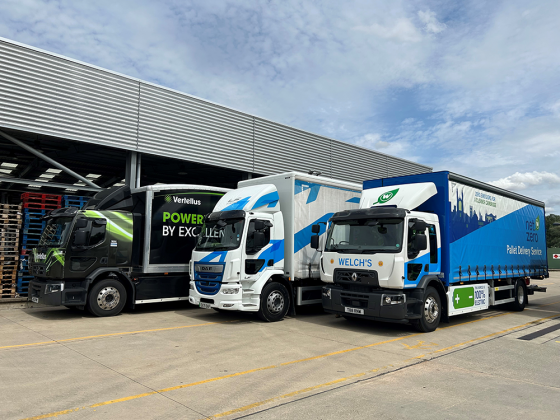Roundtable: The challenges of adopting zero emission vehicles

Understanding vehicle usage, speaking with others, and incentivising behaviour change is the best way to make the adoption of zero-emission vehicles a success, found delegates at a recent GreenFleet roundtable on 7 March at Birmingham’s Edgbaston Cricket Ground
During GreenFleet’s recent roundtable on the challenges of adopting low emission vehicles, we identified that there is no single silver bullet to improving air quality and to getting acceptance of zero emission vehicles.
The roundtable, held on 7 March at Birmingham’s Edgbaston Cricket Ground, was attended by businesses, local authorities, suppliers of vehicles and infrastructure. The discussion explored the barriers to EV adoption and how to overcome them, what EVs can do for a business, and how to make the leap in reality.
For many, changing to an electric vehicle still requires a leap of faith – a leap some have yet to wrestle with – despite mounting pressure from central and local government.
The day kicked off by looking at the rapidly changing political and regulatory frameworks that require action on transport emissions. Air quality is getting worse with increased levels of nitrous oxide, carbon dioxide and particulate matter causing ever increasing respiratory problems.
Change will happen because government has mandated it with the introduction of clean air zones and the prospect of massive fines for failing to hit agreed air quality targets. The roundtable audience heard from Chris Lane, operations manager with the University of Birmingham about the changes coming to the local area and how the local authority is driving down emissions seeking Euro six compliance for taxis and re-phasing traffic lights to reduce congestion.
As Chris rightly said, “there is no single silver bullet” to improving air quality and the challenge is to improve air quality for all, not just move the boundaries outwards from town centres. Essentially, we need less vehicles on our roads and those that are used need to be clean. Local authorities and transport operators have a wide range of interventions at their disposal and operators being able to “pay to pollute”, through congestion charging and high taxation, only works if the costs outweigh the benefit.
Chris went on to discuss the need to remove people from their vehicles and the requirement for better public transport to entice them from behind the wheel. When asked if Birmingham, as one of our major cities, has sufficient efficiently run public transport he said, as a non driver and therefore heavy user of public transport, “not yet”.
An exemplar city
Peter Eggeman, fleet support manager, at the Energy Saving Trust was able to flesh out his own experience of how Nottingham have attained “exemplar” status as a clean air zone. Nottingham started with reducing congestion, which went a long way to not only improving air quality but economically stimulating the city centre. Nottingham introduced the Work Place Parking Levy ten years ago, making people pay to use parking places at their place of work which had the effect of reducing car use. Trams were introduced, partly funded by the levy, as a way of getting people out of their cars and giving them a reliable and viable alternative to their own transport. A proactive strategy was key to making this happen. Interestingly they have achieved the same outcomes of cleaner air without introducing a formal clean air zone. Nottingham have shown that when reducing emissions there is more than one way to achieve the desired outcome.
Peter and Chris were both in agreement that clean air zones can have the effect of encouraging replacement of dirty vehicles with cleaner engines, although that may be Euro 6 compliant engines rather than full electric for many.
City logistics
How we will all respond to the transport and clean air challenge was the subject of much debate. Andy Wilson, city logistics manager with TNT Express picked up the wider discussion by suggesting that electric vehicles were doing great damage to our planet and using precious minerals that were clearly not sustainable.
Andy went on to say that from his professional position, with deliveries over large distances, electric commercial vehicles are still not adequate for the job. However, how TNT tackle the last mile delivery has opened up a range of alternatives. Putting more vehicles on the road, even if they are electric, is not the only solution. Better scheduling software, walking deliveries and bikes, along with distribution hubs can provide alternative solutions.
Andy’s thoughts on electric vehicles really got people thinking. The group had set off on an electric vehicle agenda that not everybody in the room was prepared to accept, without question. That led to us all revisiting why we were adopting technologies that, arguably, are no better than what is already on our roads.
Key to reducing transport emissions is behaviour change; getting people who have a job to do, to do something different, in the knowledge that the benefits outweigh the negatives.
Dean Hedger, the new business development manager for the AA made the point that behaviours rarely change quickly, and that “government incentives and policy initiatives need to be in place for the long term to become embedded”.
Owain Pearce, transport manager for Oxford direct services, confirmed the challenges of changing behaviour in the business community. His experiences of policy change in the city have led to quite significant push back from businesses, fearful of the impacts of regulatory change. “We will implement the clean air zone from 2020, but only between 10am and 6pm for the first two years. Some schemes will be pushed back to 2022, to allow businesses to properly prepare.”
He went on: “Fear is partially based in reality with the range of electric taxis, a key challenge in Oxford, and the initial cost of the technology”. Resistance to change is also a genuine factor for Owain and colleagues to overcome.
Having discussed the barriers to implementation, the roundtable then heard from Dominic Moyes, sales director at DG Cars in Nottingham, a man who has walked the talk of both the implementation of electric private hire taxis and the profitable operation of them. The challenge Dominic has most recently faced is the introduction of rapid charging taxis. Through a creative relationship with his council, Dominic is moving forward with the installation of five new rapid chargers.
Nick Carvell, head of transport with Leicestershire Police illustrated brilliantly the challenges faced by many of making the first foray into new vehicle technologies. With a large and varied fleet he needs certainty to be able to convince very senior officers and drivers that change is right.
The roundtable delegates agreed that knowing how each vehicle operates and what journeys they all do will help pick of the “low hanging fruit”; those vehicles that could either be removed from the fleet, as they don’t earn their keep, or those that could be replaced with electric vehicles.
Alun Davies, operations director of Electrassure, gave some reassurance to Nick that ”he will find a community of people who have been there already and are keen to share their experiences to avoid making expensive and painful mistakes”.
Of particular interest to the roundtable was the range of electric light commercial vehicles now on sale in the UK from LDV. Mark Barrett, general manager LDV UK and Ireland, outlined the vehicles available including a 3.9 tonne electric van with multiple different body options and a range of 120 miles. Mark said: “People are just realising that commercial vehicles are a large part of the problem and our electric vans are ready now to provide the solution. The key for LDV is to understand what the business needs from the vehicle. The fact that it is electric is almost a secondary consideration, providing the journey profile can be covered by the vehicle.”
Sally Yates, logistics & waste manager for an NHS trust, like others has the unenviable task of convincing managers to invest in charge point infrastructure rather than other capital equipment. We discussed how creative commercial relationships with charge point manufacturers can leverage government grant funding plus investment from the charge point operator, giving them the opportunity to make income from charging sessions rather than the trust having to invest precious financial resource.
Sally also highlighted the issues around reimbursing those, who take a vehicle home at night, for charging at home. This highlighted once more the need to have good policies in place to support behaviour change.
Understanding your business
Andy Wilson, from TNT helped us to wrap up what had been a very interesting and challenging day by saying: “We need to reduce vehicles on our roads and use alternative modes of transport and delivery. We need to be more creative in how we solve the problem of poor air quality and congestion. There is no one single simple solution and only by really understanding your business can you be sure of making informed choices and equipping your business for what will undoubtedly be an ever changing transport landscape.”
What emerged from the roundtable discussion once more is that if you want to make the change and be an early adopter of electric vehicles, you can. The journey will not be easy or without mistakes but speaking to other businesses and sharing knowledge is the way to avoid the large and costly pitfalls.
The resounding message from the day was that congestion is the main enemy of clean air and we all must do more to get unnecessary vehicles off our roads. Those that are necessary need to be as clean and efficient as possible. Improved data and understanding coupled with good relationship with those that have made the change will reap rewards.






